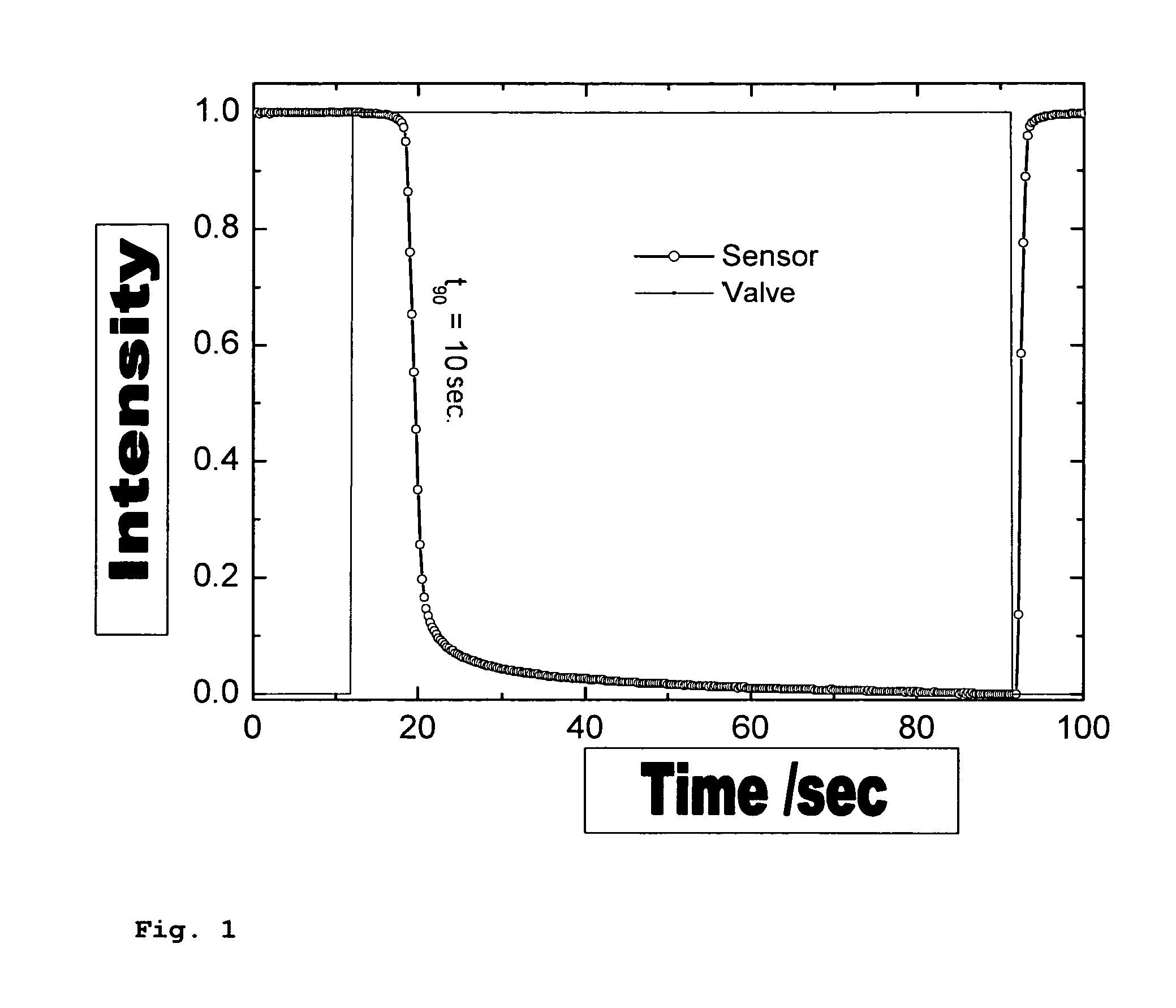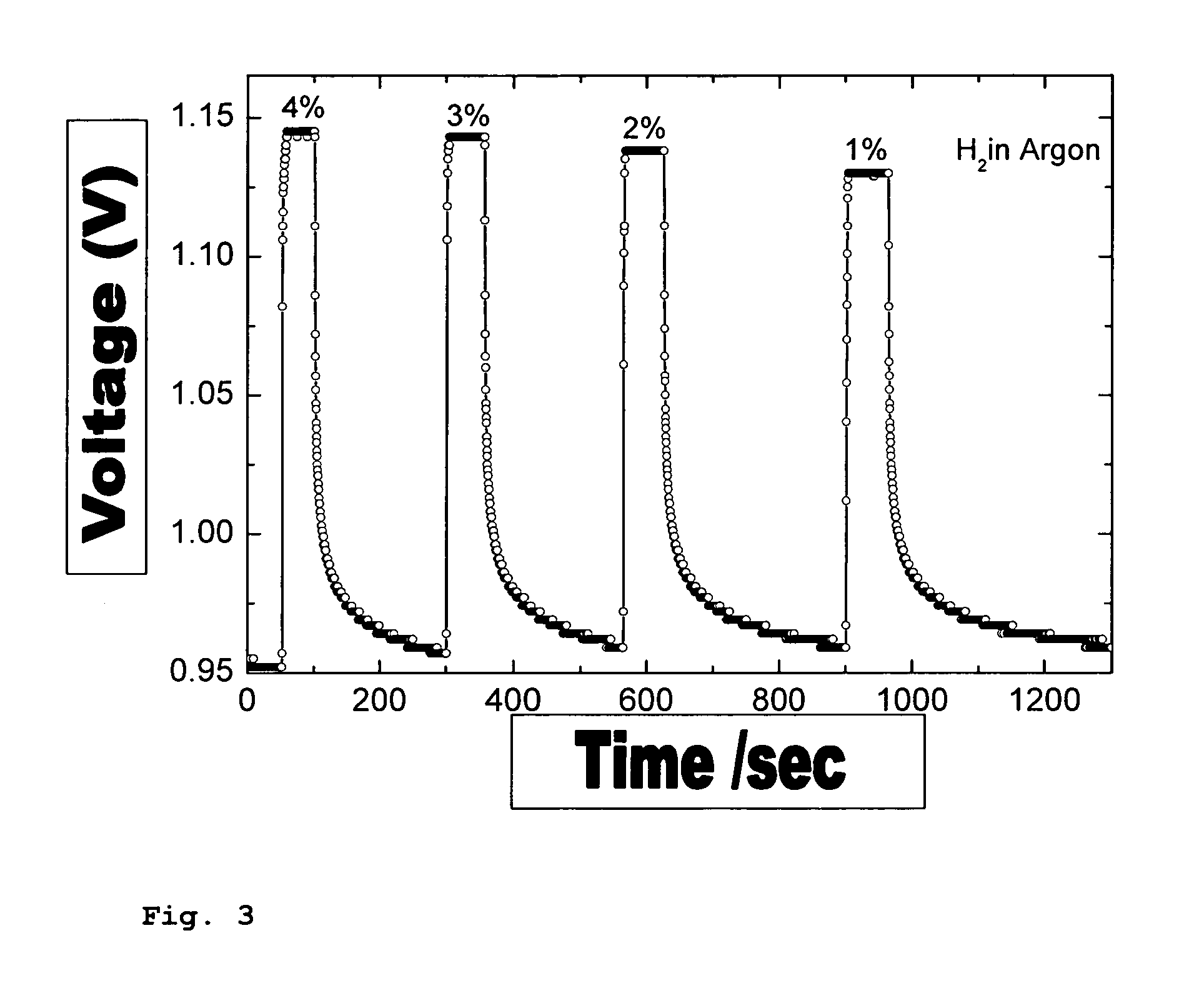Gas sensor for determining hydrogen or hydrogen compounds
a technology of hydrogen or hydrogen compounds and gas sensors, applied in the field of gas sensors, can solve the problems of gas detection either being carried out, complex devices are required, and the measurement is relatively complex
- Summary
- Abstract
- Description
- Claims
- Application Information
AI Technical Summary
Benefits of technology
Problems solved by technology
Method used
Image
Examples
Embodiment Construction
[0018]In a particularly preferred embodiment, which is suitable for being read not only optically but also electronically, the substrate consists of a transparent material, e.g. glass or plastic or polymers or semiconductors.
In this embodiment, no means of electronic connection are necessary.
[0019]The functional layer or the functional area are suitable for, in the optical or in the electrical embodiment, comprising amorphous, microcrystalline or polycrystalline Mg, or Mg2Ni, or MgAl or MgAl(1-x)Nix or in the form of Mg with Al and further free combinations of elements from the following group: Li, Be, Na, Ti, V, Cr, Mn, Fe, Co, Ni, Zr, Nb, Mo, Tc, Ru, Rh, Pd, Ag, Cd, Hf, Ta, W, Re, Os, Ir, Pt, Au, Hg, Si, K, Ca, Ga, Ge, As.
[0020]The means of activation or cleavage or dissociation (in the above sense) of hydrogen are suitable for being realised—provided that the sensor is realised as a layer system—in the form of a top layer from Pd or Pt or other hydrogen activating or hydrogen cle...
PUM
| Property | Measurement | Unit |
|---|---|---|
| temperatures | aaaaa | aaaaa |
| thickness | aaaaa | aaaaa |
| thickness | aaaaa | aaaaa |
Abstract
Description
Claims
Application Information
 Login to View More
Login to View More - R&D
- Intellectual Property
- Life Sciences
- Materials
- Tech Scout
- Unparalleled Data Quality
- Higher Quality Content
- 60% Fewer Hallucinations
Browse by: Latest US Patents, China's latest patents, Technical Efficacy Thesaurus, Application Domain, Technology Topic, Popular Technical Reports.
© 2025 PatSnap. All rights reserved.Legal|Privacy policy|Modern Slavery Act Transparency Statement|Sitemap|About US| Contact US: help@patsnap.com



